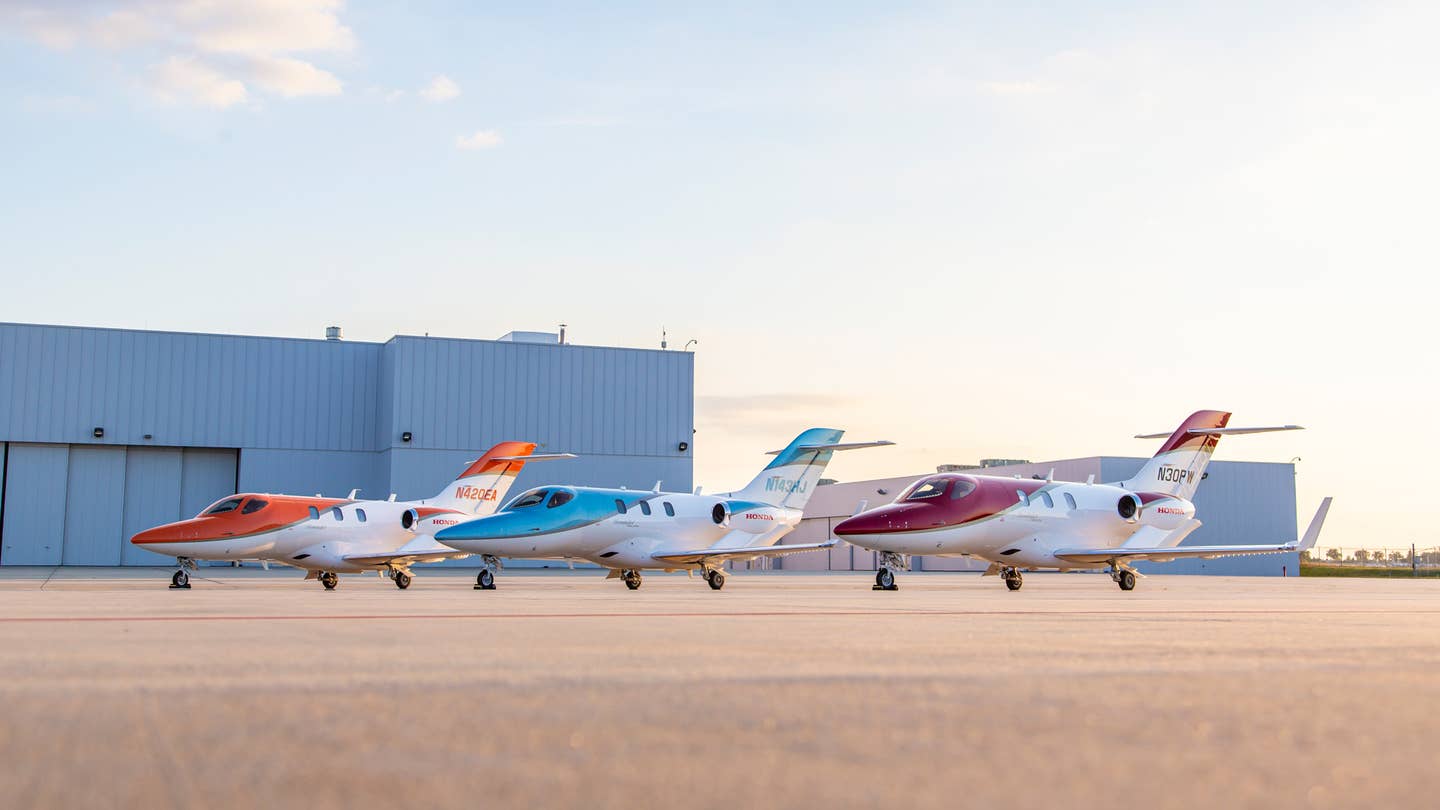
The HondaJet posted the most deliveries in the very light jet segment. Honda Aircraft Company
Three major themes took center stage on February 19, 2020, at the annual meeting of the General Aviation Manufacturers Association at the National Press Club in Washington, D.C. Leaders from OEMs and a broad range of associations and industry executives met for GAMA’s release of its 2019 sales report—but the increase in shipments and billings for the year across most sectors was only half of the story.
Total deliveries across all segments reached a value of $26.8 billion, up from $24.3 billion in 2018. Piston and turbine segments showed increases, while the turboprop and helicopter segments were down overall. Once GAMA president and CEO Pete Bunce walked the room through the key figures from the report, he moved on to reflecting on the past year, and illuminating the cooperative efforts of the industry in several critical areas important to preserving general aviation’s future.
“All of us in this room—we all played a role in meeting the ADS-B mandate,” said Bunce. “It was a joint effort with our partners in the FAA ...manufacturers, customers, AEA... and just like Y2K, the world didn’t stop when we hit 1 January,” noting the continued work required in Europe and other parts of the world to reap the clear safety benefits offered by the service. As a result of the mandate, the Aircraft Electronics Association reported strong growth in the avionics market—growth it hopes to continue beyond the ADS-B milestone.
The first of the themes Bunce highlighted was GA’s economic impact, including workforce development, and Bunce credited the efforts of the various associations in attendance with working together to encourage the industry’s importance within the US economy. Beyond the numbers, Bunce talked about the projects GAMA and others are working on to put stories out there to reach the general public with aviation’s critical impact. A study by PricewatershouseCoopers was commissioned by a consortium of associations, including AEA, AOPA, EAA, GAMA, HAI, NATA, and NBAA, to use in this mission.
Next, the long-term effects of the Boeing 737 Max crisis show potentially severe—and in fact devastating—impact on aircraft certification programs across general aviation. In a panel of OEM leaders, also including Brad Mottier from GE Aviation, Michael Amalfitano from Embraer, David Coleal from Bombardier, and David van den Langenbergh of Luxaviation, Textron Aviation’s president and CEO Ron Draper outlined specifically how the manufacturer has developed its ODA program in close concert with its FAA counterparts—and Bunce presented a diagram he uses for crafting talking points with members of Congress to explain the complexity of the process. Bunce reported on how the general media has oversimplified the certification issue, and the GA industry stands to lose not only a good partnership with the FAA, but indeed its very ability to produce new aircraft as a result of potentially rolling back current certification programs.
Entrants into the market followed mostly traditional platforms, but Bunce also highlighted the development of electrically powered aircraft, and other innovative solutions to sustainability—a third big theme of the meeting. “It is going to change our world, and it’s going to happen faster than we realize,” said Bunce, talking about the development of electric aircraft and other projects using alternative fuels and propulsion. “There are a lot of naysayers out there, that are policy wonks and everything, but I’m telling you that if you go out there and see the money that’s flowing into this industry right now,” the picture is clear. Sustainability also brought forth passionate commentary from the panel of OEM leaders. Coleal, president of aviation for Bombardier, and Amalfitano, president and CEO of Embraer Executive Jets, each highlighted their company’s efforts to promote sustainable aviation fuels and materials. Coleal pointed out that SAFs are a drop-in replacement for jet-A, already ASTM compliant— and Amalfitano noted the “tree of life” approach that Embraer now takes to producing aircraft components, each with a sustainability objective in mind.
For a closer look at the numbers, see the full report. Piston shipments marked a significant increase, up 16.4%, with billings up by 20.2%. Bunce said, “This is the largest number we’ve had shipped since 2008, and the reason for the growth is from the training market.” We’ve seen more than 250,000 piston aircraft shipped in the 50 years of GAMA’s existence. The North American market posts the biggest share, with growth in Asia to reflect the demand for pilot training in that region.
Turboprop airplane shipments were down, relative to 2018, with 525 turboprop-powered airplanes shipped. Bunce noted that the turboprop segment has been the most stable slice of the market over the past ten years, moving between roughly 450 and 600 shipments per annum.
Business jet shipments showed a healthy upward trend as well, marking a 15.1% increase over the 2018 numbers. Again, the jet numbers hit their highest mark since 2009—notable as the 2008 to 2009 period demonstrated the end of good times in the market. At 16.7% billings showed slightly less than the 2014-2015 timeframe, as reflected in the larger number of midsized and large business jets delivered in the previous years as a percentage of the total.
In specific releases from OEMs, Embraer announced its Phenom 300 and Phenom 300E were the most delivered light jets in the world in 2019, with 51 deliveries. It’s the eighth consecutive year that Phenom 300 has achieved this status, with more than 530 deliveries since December 2009.
HondaJet was the most-delivered very light jet with 36 total during the year. Honda Aircraft Company president and CEO Michimasa Fujino said, “We are continuously improving our efficiency, overall performance, and cabin comfort in order to be at the forefront of transformative technology that proves the value of very light jets for efficient travel to all types of users.”

Sign-up for newsletters & special offers!
Get the latest FLYING stories & special offers delivered directly to your inbox






